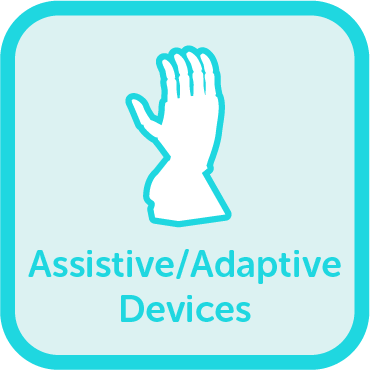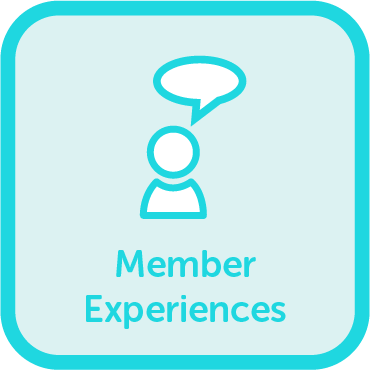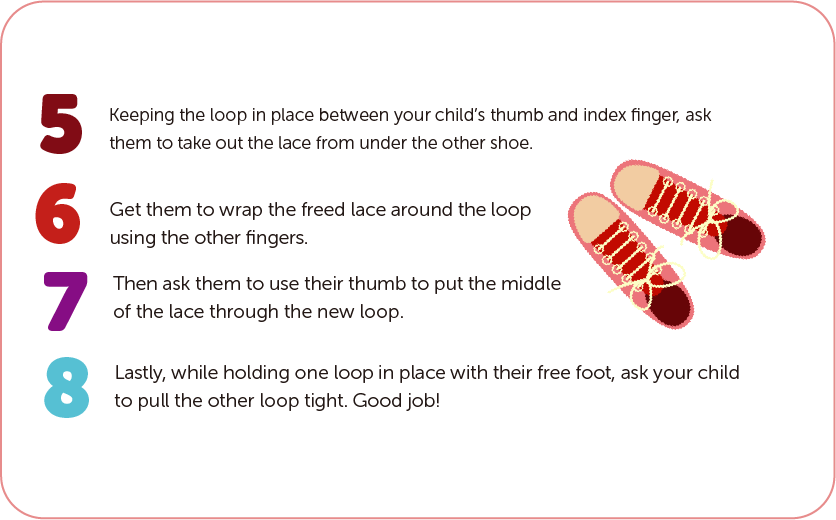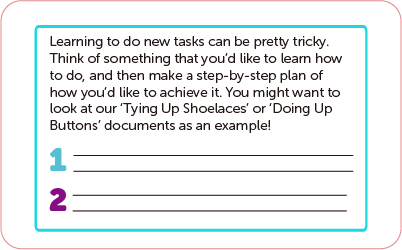
SELF-CARE & INDEPENDENCE
Your child will naturally want to become more independent as they reach kindergarten and school. They will want to show that they can do everyday tasks like tying shoelaces, managing buttons and zips, tying hair, brushing teeth and eating independently.
Many parents say their child is adaptable and resilient, they find their own way of doing things. Some parents have found that occupational therapy, a prosthesis or assistive devices have helped their child gain independence.
Hear From Aussie Hands Parents
Aussie Hands parents have shared how they helped their child gain independence. They share how their children learn what they need to do and reach development milestones in their own time.
- Encourage motivation and give your child opportunities to practice as they will learn from doing.
- Give your child extra time (in months or years) and consider additional assistance needed before they can master a difficult task.
- You may need to problem solve or be creative in finding different ways for your child to perform tasks.
- Encourage your child to be open to using a simple gadget or assistive device, especially as they get older and want do more complex tasks like riding a bike or playing an instrument.
‘For Aussie Hands kids it is important to continue to meet and interact with others like themselves – so they learn that although they are different, there are others like them and there is community support.’
Hear From Experts
You may be wondering when your child will start to become more independent but there are no hard and fast rules as to how soon they will take care of themselves. This may depend on how long it takes them to work things out on their own, balanced with how long you help them with certain tasks. It may also depend on what type of hand or upper limb difference your child has.
‘I encourage connecting children with other kids who have a limb difference because it’s really valuable for children to know that they are not the only one. I love the idea of organisations like Aussie Hands where parents of kids with a limb difference can come together to share experiences. Kids can also have fun doing different activities with their new friends.’
Experts suggest letting your child do as much as they can for themselves. Once your child starts kindergarten or school, you may find that they become more vocal about what they like or don’t like to do or what’s working for them or not.
Limb Management Clinic Coordinator at Sydney Children’s Hospital, Randwick Leslie Wollin recommends that, while encouraging children to be more self-sufficient, it’s important to be mindful that children with upper limb differences may need to perform additional steps in activities and it may take them longer to complete them as a result.
‘It’s not the best time for children to learn a new task like tying their shoelaces when you’re racing out the door to school. It’s about finding the right time to practice something new and giving children time to explore and learn the steps of a new activity without additional pressures.’
How can an occupational therapist help your child become independent?
When your child is getting frustrated or having difficulty, that’s when it might be time to get in touch with an occupational therapist (OT). A 2021 Aussie Hands Survey found that approximately 30% of members thought that assistive and adaptive devices were part of their priorities for school aged children with a hand difference.
An OT can support your child to participate in developmentally appropriate activities, like eating, getting dressed, playing and completing school work. They can show your child how tasks are broken down and which specific parts of a task can be done differently. Once shown different options, often choose the way that suits them best. OT’s support children through functional training and helping them celebrate their limb difference.
Assessments and recommendations for assistive devices that might be helpful for your child are also done by an OT. If you and your child decide they will trial a prosthesis, an OT will provide support and training to ensure they know how to use the prosthesis functionally.
Your local doctor is a good starting point to ask about suitable occupational therapists in your area, or you can check Occupational Therapy Australia.

Find the right challenge
Occupational therapists often include ‘grading’ as part of their interventions.
‘If the task is too easy or too difficult, an OT will grade it to be more challenging or more achievable. Breaking tasks down in this manner can help to provide a ‘just right challenge’ for your child. Grading activities is like training and one part of the process to enable your child to become independent and to achieve their goals.’

Choose Goals
Occupational therapists recommend choosing goals that are appropriate to work towards with your child.
‘Don’t pick too many, even just one or two in the beginning. If a task can be done using an adaption or technique, this means being able to do the task anywhere. Sometimes though, an assistive device might be considered and could be helpful.’
Considering Assistive Or Adaptive Devices
What is the difference between assistive technology and an adaptive device?
Assistive technology is an umbrella term for the wide range of systems and devices intended to help people with disabilities to meet their everyday needs with little assistance.
The National Disability Insurance Scheme (NDIS) take their definition of Assistive Technology from the World Health Organisation, which deems it to be:
‘Any device or system that allows individuals to perform tasks they would otherwise be unable to do or increases the ease and safety with which tasks can be performed.’
Whereas an adaptive device assists a disabled or impaired individual in accomplishing typical activities of daily living, for example, eating, dressing or writing.
A prosthesis is an example of assistive technology that can help your child play sport whereas a button hook is an example of an adaptive device that can help your child manage buttons.
You may be concerned about how your child will adapt to everyday tasks and this is where your OT can guide you in what devices they can try out.
The suggestions below include Independent Living Centres Australia as a source of information on selected devices and gadgets.
Eating
- Cutlery – Adapted cutlery like angled spoons and forks make it easier to eat.
Dressing
- Shoes – Tyeless shoelaces or tie-free slip-on shoes like Hickies are an alternative or while your child learns to tie shoe laces.
Check out this Tying Up Shoelaces activity as a prompt for your child
Check out Aussie Hands member Ben’s shoe tying tip
Check out Hannah’s One-Handed Shoe Tying
- Buttons – button hooks can assist in pulling buttons through a buttonhole.
Check out this Doing Up Buttons activity as a prompt for your child.
- Zips – a zipper pull, split ring or ribbon loop, as well as other zipper aids, can be attached to the pull tab, if a finger can be used to hook and the pull tab cannot be pinched.
Check out Sam from My Special Hand zipping up his coat
- Tying hair – a one handed hair tie helps tie hair into a ponytail or it can be used as a headband.
Check out Jessica’s One-Handed Hair Tying
Study time
- Writing – pencil grips can assist with writing plus see this Developing a Pencil Grip fact sheet by the Department of Occupational Therapy, Royal Children’s Hospital Melbourne.
- School bag with wheels – can help if your child cannot get a bag on their back.
- Paper weight – can help with holding down worksheets and books.
- Using a keyboard – There are several resources available to assist children with hand differences to learn computer keyboard skills. This can involve modified methods of typing or modified keyboards.
- One-handed keyboards making schoolwork easier
- Ability Technology is a non-profit organisation based in Sydney, Newcastle and Canberra, Australia available to assist people with a disability with the use of computer and home control technology.
- Spectronics inclusive learning technologies is a Brisbane based company which supplies special needs software and technology.
- Five Finger Typist is a typing tutor for people who want to learn to type with one hand. It teaches the accepted keyboarding technique for one-handed touch typing on the standard (QWERTY) keyboard. Developed by SoftDawn Software, a Melbourne based company.
 Rulers – can sometimes be difficult to manage so this non-slip ruler from the Australian Ruler Co. with its sticky rubber ridges underneath and also a raised centre can help.
Rulers – can sometimes be difficult to manage so this non-slip ruler from the Australian Ruler Co. with its sticky rubber ridges underneath and also a raised centre can help.
Here’s a Self-Care & Independence activity for your child
Ask your child to choose a task they would like to learn to do and they can use this Self-Care & Independence activity to help them make their own step-by-step plan to achieve their goal.
Considering a prosthesis
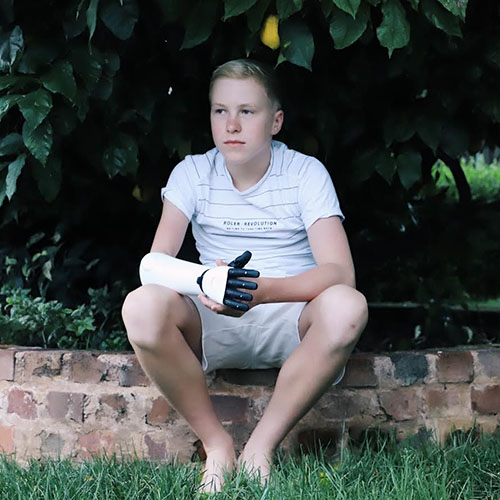 At different times in your child’s life you or your child may wish to trial a prosthesis. A prothesis may be considered to give them flexibility and increase their confidence. Seeing their friends or classmates having fun bike riding, skipping rope, playing a musical instrument or cooking may also motivate your child to let you know that they want to try new activities.
At different times in your child’s life you or your child may wish to trial a prosthesis. A prothesis may be considered to give them flexibility and increase their confidence. Seeing their friends or classmates having fun bike riding, skipping rope, playing a musical instrument or cooking may also motivate your child to let you know that they want to try new activities.
A prosthesis may also be worn for aesthetic, social, emotional and identity reasons. Ultimately, it will come down to your child’s personal preference and individual needs, which may change at different life stages.
In a study by Vasluian et al. (2013), one 16-year-old girl who wears a prosthetic said: ‘When I play soccer, I have my prosthesis on…I have the feeling that I hae better balance with it [the prosthesis] on and that I can manage better if I fall.
In the same study, an 11-year-old boy who doesn’t wear a prosthetic said: ‘I never wanted it [the prosthesis] before, because I considered it a fake hand…I’m not ashamed about it [the affected hand].’
A prosthetist can work with you and your child to design a prosthesis that best suits your child’s needs and will continue to review and adjust this as they grow. An occupational therapist with specific experience in upper limb difference, will work with the prosthetist to determine what the psychological and functional goals for the prosthesis prescription are.
Prosthetist Tom Clingin provides some helpful suggestions:
‘There is a lot of training involved in using prosthetic devices and motivation may waiver at certain life stages.
- Define goals as this will guide where the assessment may lead, for example, what tasks or activities does your child want to do?
- Define functional limitations that are related back to the goals. This can determine how a prosthetic device can help bridge that gap to help your child reach their goals.
- It is important to involve a multi-disciplinary team during assessment and prosthetic training. For example, an occupational therapist can assess your child at home and potentially at school and offer advice on what device, prosthetic or other aids, they may require.
- Kids goals will keep changing and their prosthetic device will have to change and adapt with that.
- Accept that this is a long journey, a lifelong journey for your child.
- Please contact your local prosthetist for personalised advice as these suggestions are very general in nature.’
You can find a prosthetist through a Limb Difference Clinic or your local doctor. Alternatively, you can search for a prosthetist through the Australian Orthotic Prosthetic Association.
Aussie Hands Member Mat Bowtell and FREE 3D HANDS
By combining his desire to help others and engineering skills, Mat began his mission to develop low cost hands and assistive devices using 3D printing technology and setting up the Australian based charity FREE 3D Hands.
Mat’s designs and adjustments have further developed by getting involved with the Aussie Hands community and learning that people may not necessarily want a hand but a skipping rope attachment, tennis ball thrower or something to help them play the piano instead. Read more about Mat in Mat Bowtell of FREE 3D Hands creating joy, combining his altruism and engineering expertise.
A Helping Hand: Building life-changing prosthetics (ABC Catalyst)
Member Experiences
Aussie Hands members have pursued different options when it comes to both assistive and adaptive devices. Let’s hear from Tahlia, Alec and Caeleigh about their experiences.
How a 3D hand and adapters assist Tahlia
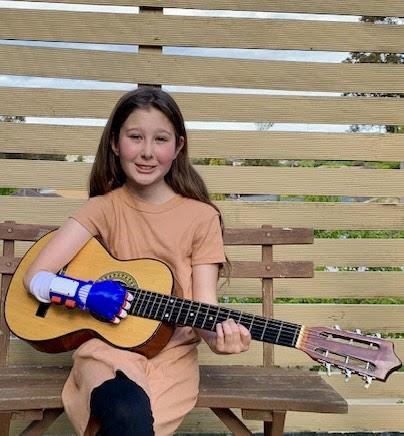 ‘I like to work out how to do everything my own way, and there’s nothing I can’t do, but my 3D hand and adapters make things easier.
‘I like to work out how to do everything my own way, and there’s nothing I can’t do, but my 3D hand and adapters make things easier.
When I was younger I never wanted to use anything “different” to other kids and preferred to work out my own way of doing everything! I even hid the first ones Mum bought me.
After getting a skipping rope attachment from Free 3D Hands, that I used for skipping, holding cooking utensils & lots of other things, I figured out that attachments just make things less complicated. This is the same with adapters, like what I have for my recorder.
Having my 3D hand has been fantastic and made it easier to do many things including playing ball sports like tennis, playing guitar, being more balanced when riding my bike, cooking, baking and holding the microphone when speaking and singing in front of others. Having my 3D hand is what gave me the confidence to try again to learn to ride my bigger bike.’
Alec’s prosthetic arm gives balance
 ‘I have always loved playing sport. I love football, soccer, cricket, mountain biking and tennis and play competitively in each sport. When I go mountain biking, I use my prosthetic arm, it’s helped me feel stable and capable on my bike. My favourite trail is Blue Tier in Derby Tasmania (a 20km blue trail).
‘I have always loved playing sport. I love football, soccer, cricket, mountain biking and tennis and play competitively in each sport. When I go mountain biking, I use my prosthetic arm, it’s helped me feel stable and capable on my bike. My favourite trail is Blue Tier in Derby Tasmania (a 20km blue trail).
I have a custom-made bike orthoses from The Royal Children’s Hospital Melbourne Orthotic and Prosthetic Unit.’
Caeleigh encourages kids to believe in yourself
 ‘Even though people will say you can’t do things, it is always best to prove them wrong. If you want to use aids, don’t have them forced on you as you can live a perfectly normal life without assistive devices, it’s always your decision. It is also your decision when you feel comfortable using one. As many people don’t have the knowledge or the understanding, you need to believe in yourself and this helps you become very self-aware.’
‘Even though people will say you can’t do things, it is always best to prove them wrong. If you want to use aids, don’t have them forced on you as you can live a perfectly normal life without assistive devices, it’s always your decision. It is also your decision when you feel comfortable using one. As many people don’t have the knowledge or the understanding, you need to believe in yourself and this helps you become very self-aware.’







